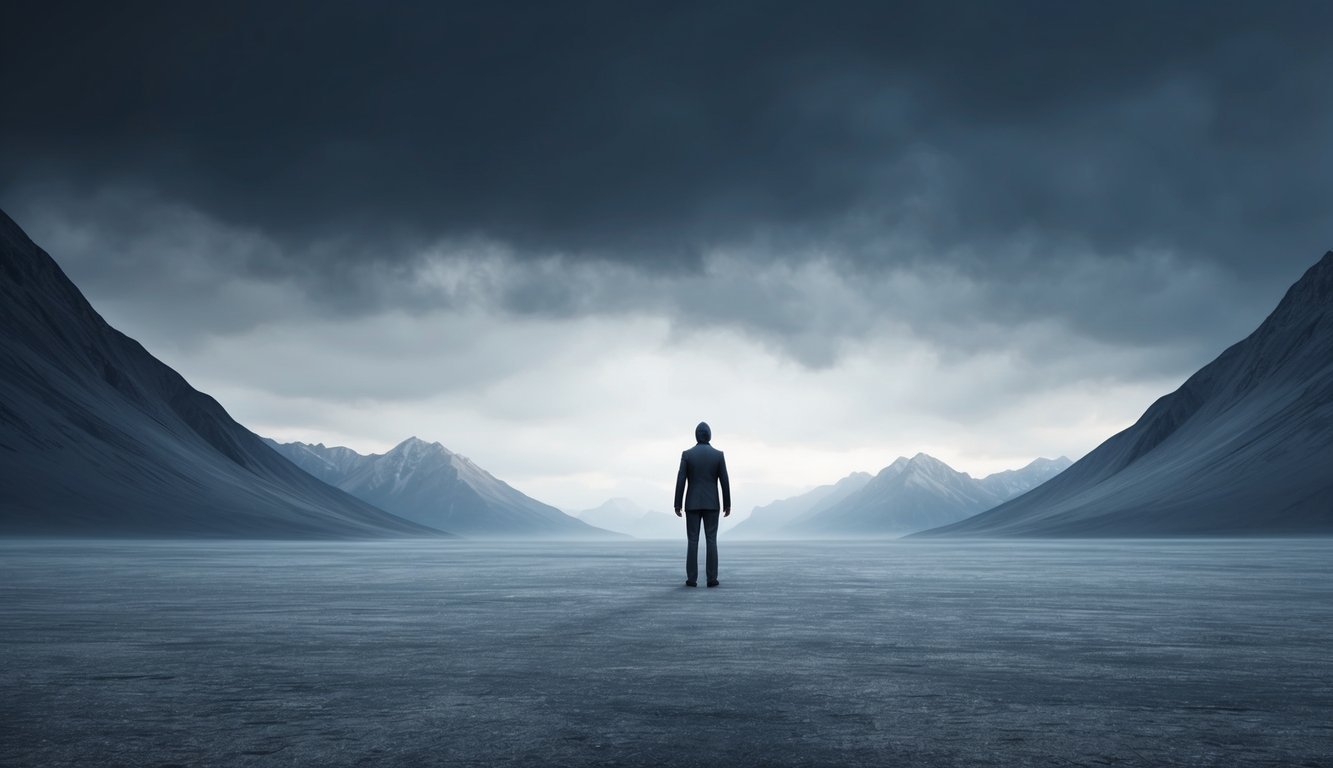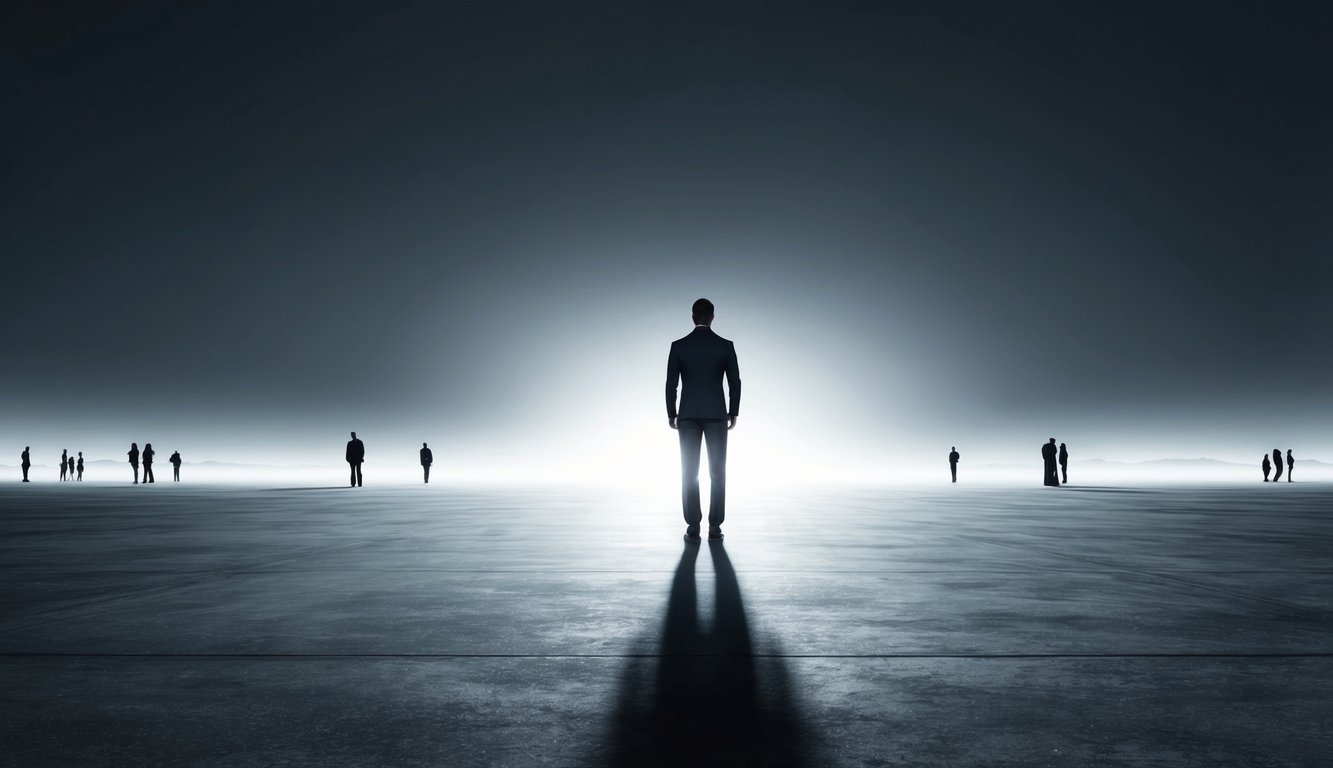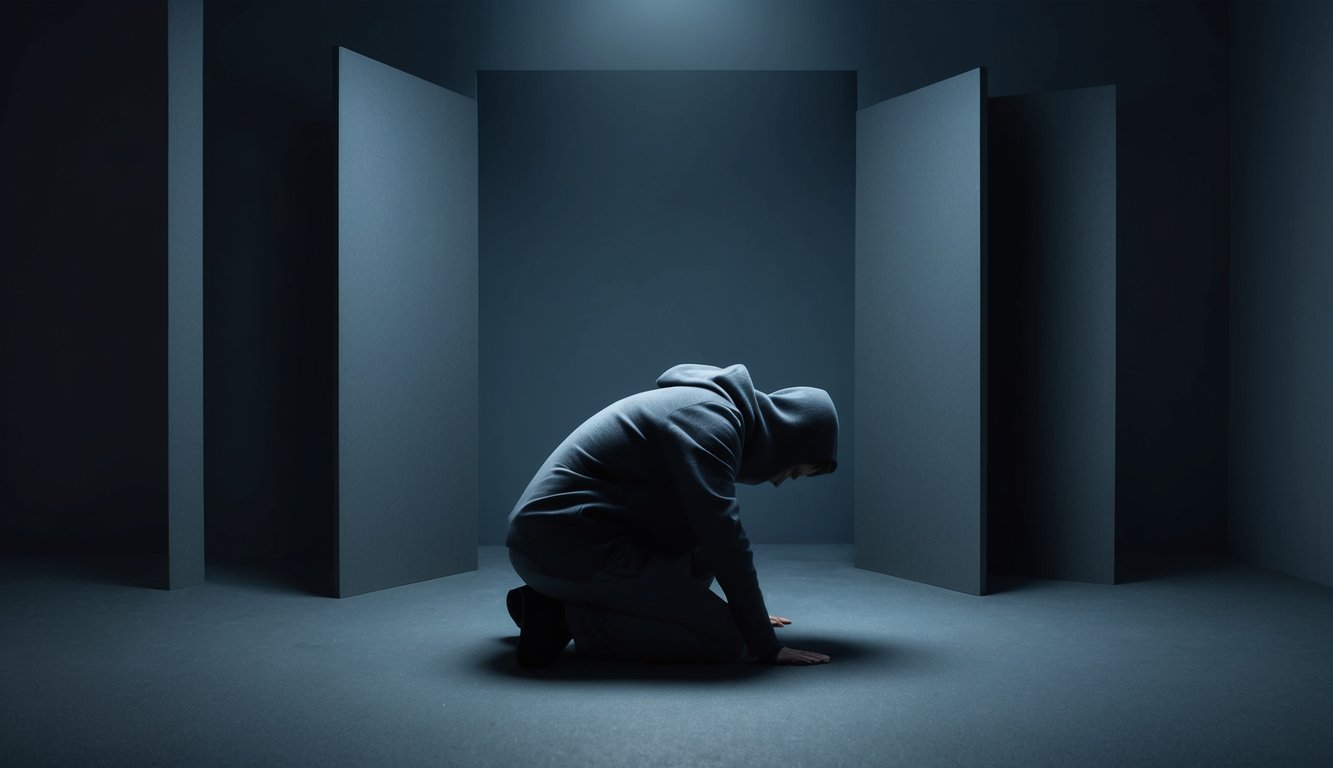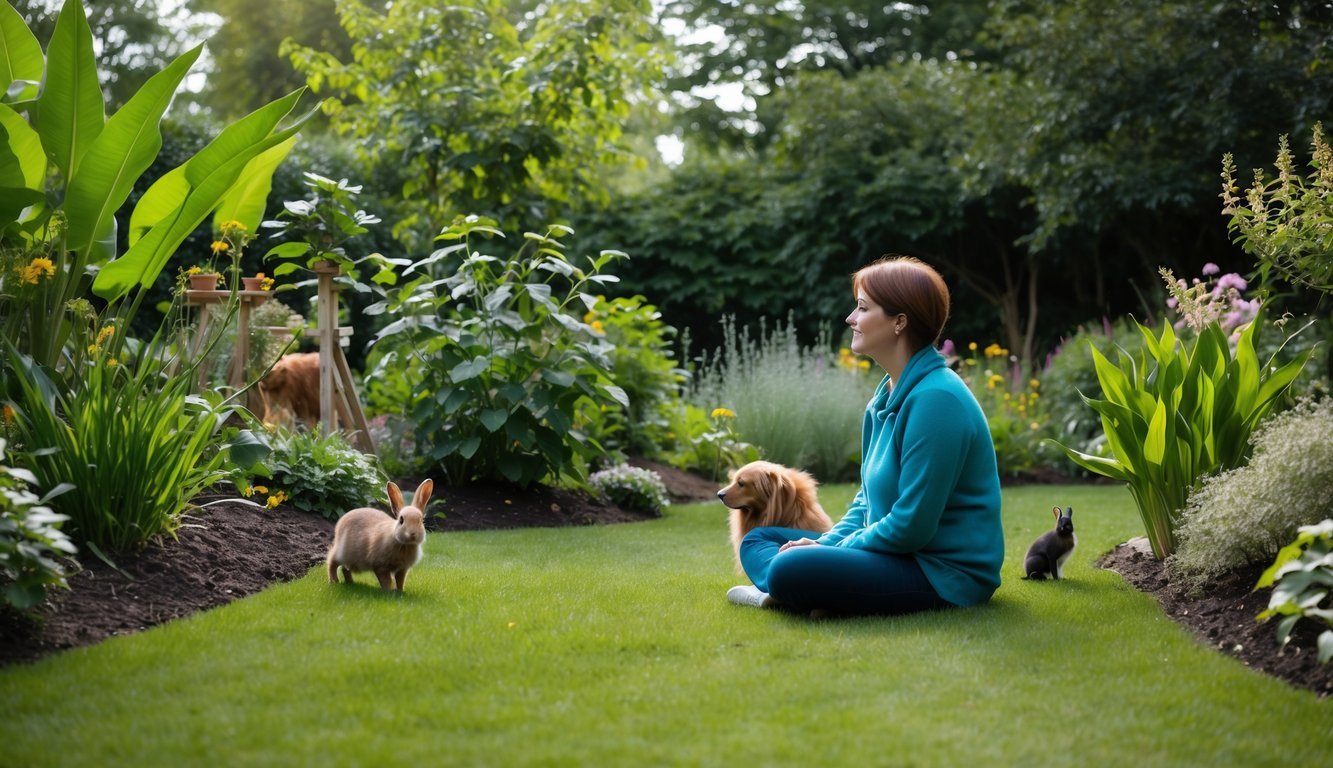PsychNewsDaily Publishers
100 Summit Drive
Burlington, MA, 01803
Telephone: (320) 349-2484
PsychNewsDaily Publishers
100 Summit Drive
Burlington, MA, 01803
Telephone: (320) 349-2484
Anthropophobia is an intense fear of people or social situations, leading to significant anxiety, avoidance behaviors, and physical symptoms like sweating and rapid heartbeat.

Anthropophobia is a specific phobia that involves an intense fear of people or social situations. It can lead to significant anxiety and affect daily life. Exploring its definition and causes helps to understand this condition better.
Anthropophobia, often termed as a fear of people, falls under the broader category of social phobias. Those with this phobia may experience extreme discomfort around strangers or in crowded areas.
Symptoms can include sweating, rapid heartbeat, and feelings of dread when faced with social interactions. It differs from shyness, as the fear can be so overwhelming that it prevents individuals from engaging in normal activities.
Other related terms include social anxiety disorder and selective mutism, indicating various levels of fear and avoidance in social settings. Understanding these distinctions is essential for those seeking help or support.
Various factors can contribute to anthropophobia, including past trauma and negative experiences with others. A person who faced bullying or rejection may develop deep-seated anxiety towards social situations.
Cultural influences also play a part. In some cultures, social behaviors are highly regulated, leading to more anxiety around interactions.
Moreover, mental health issues such as depression and generalized anxiety disorder can exacerbate feelings of fear. Understanding these causes is crucial for effective treatment and support for those struggling with anthropophobia.

Recognizing the symptoms of anthropophobia is essential for understanding this fear of people. Individuals with this condition may experience various physical and emotional signs that can impact their daily lives.
People with anthropophobia often encounter specific physical symptoms. These may include:
When faced with social situations, their body may react strongly. Some might experience trembling or shaking, while others feel dizzy or lightheaded. Nausea can also occur, making it difficult to be around others. These physical reactions can make social gatherings very challenging.
Emotional symptoms can significantly affect a person’s life. Common signs include:
Individuals may also feel overwhelmed by the thought of interacting with others. This can lead to withdrawing from important relationships. Such patterns can increase their anxiety and further reinforce their fear of people. Recognizing these emotional signs can help in seeking appropriate support and intervention.

Anthropophobia is a specific fear of people. It shares similarities with other phobias but also has its unique traits. Understanding these differences helps clarify how anthropophobia fits into the wider world of phobias.
Many people are familiar with common phobias like social phobia, acrophobia, and claustrophobia.
Social Phobia: This involves a fear of social situations and being judged by others. Anthropophobia can be seen as a branch of this phobia, where the fear is more focused on individuals rather than groups.
Specific Phobias: These include fears of certain objects or situations, such as glossophobia (fear of public speaking) or trypanophobia (fear of needles). Like these, anthropophobia may provoke extreme anxiety and avoidance behavior.
Shared Symptoms: Common symptoms include increased heart rate, sweating, and anxiety. In both anthropophobia and other phobias, these symptoms can significantly impact daily life.
Anthropophobia stands out in several ways:
Focus on Individuals: Unlike social phobia, which involves groups, anthropophobia is centered on fear of specific people or being in close proximity to them.
Cultural Context: Some studies suggest that the experience of anthropophobia can vary greatly across different cultures, impacting how individuals perceive and interact with others.
Underlying Causes: The roots of anthropophobia may differ from those of other phobias, potentially linked to past trauma, societal influences, or even genetic factors.
Recognizing these unique traits helps in understanding the complex nature of anthropophobia compared to other phobias.

Finding the right treatment for anthropophobia, the fear of people, can greatly improve a person’s quality of life. A mix of professional help and self-guided techniques often leads to the best outcomes.
Psychological therapy is a key method for treating anthropophobia. Cognitive-behavioral therapy (CBT) focuses on changing negative thoughts and beliefs. It helps individuals face their fears in a safe environment.
Clinical hypnotherapy is another effective option. This form of therapy can help patients reframe their responses to social situations. In places like Wolverhampton, professionals offer tailored sessions to guide individuals through their anxiety.
Seeking therapy from qualified professionals is important. They can provide personalized strategies to manage anxiety disorders linked to anthropophobia. Group therapy also allows individuals to connect with others facing similar challenges, creating a supportive atmosphere for healing.
Self-help techniques can be beneficial alongside professional treatment. Mindfulness practices and relaxation exercises help reduce anxiety in social settings. Regular practice of deep-breathing techniques can calm the mind and body.
Support groups offer a space for sharing experiences. Hearing others’ stories can provide comfort and reduce feelings of isolation. It’s helpful for individuals to connect with friends or family for encouragement when facing social situations.
Journaling can also be effective. Writing down feelings can help clarify thoughts and reduce anxiety. Engaging in hobbies or activities that promote social interaction in a low-pressure setting can also help build confidence over time.

Living with anthropophobia involves navigating social situations that can trigger anxiety or panic attacks. Building a lifestyle that includes healthy habits and developing social skills can greatly help those affected.
Healthy habits play a crucial role in managing symptoms of anthropophobia. Regular exercise can reduce anxiety by releasing endorphins, which improve mood. Activities like walking, jogging, or yoga can help.
Nutrition also matters. A balanced diet provides essential nutrients that have a positive impact on mental health. Foods rich in omega-3 fatty acids, like salmon and walnuts, can aid brain function.
Additionally, adequate sleep is key. Lack of sleep can worsen feelings of anxiety and make social situations feel even more daunting. Establishing a regular sleep schedule can be very helpful.
Building social skills is important for those experiencing anthropophobia. They can start in low-pressure environments. This includes engaging in conversations with friends or family.
Joining support groups can be a safe way to meet others facing similar challenges. In these settings, individuals often feel less judged, which can reduce anxiety.
Practicing relaxation techniques, like deep breathing, can also help during social situations. These techniques can prevent panic attacks and help manage stress.
Lastly, developing resilience through small challenges can make a big difference. Setting achievable goals in social interactions can build confidence over time. For instance, they can aim to say hello to a neighbor or join a community event. Each step can lead to greater comfort in social settings.

Understanding anthropophobia involves exploring its signs, diagnosis, treatments, and differences from other conditions. This section addresses common queries related to this specific fear.
People with anthropophobia often experience intense anxiety at the thought of being around others. They may avoid social situations, feel extreme discomfort in public places, and have physical symptoms like sweating or trembling.
Other signs can include rapid heartbeat, difficulty speaking, or a strong desire to escape when in group settings. Many individuals may also feel overwhelmed by the fear of being judged or scrutinized.
Diagnosis of anthropophobia typically involves a mental health professional assessing an individual’s symptoms. They may use specific criteria from the Diagnostic and Statistical Manual of Mental Disorders (DSM-5) to identify the fear related to people and social situations.
It is important for a person to openly discuss their feelings and experiences to help the professional understand the severity and impact of the fear on daily life.
Treatment options for anthropophobia may include therapy, such as cognitive-behavioral therapy (CBT), which helps individuals manage their thoughts and feelings about social interactions. Exposure therapy is another method that gradually exposes individuals to their fears in a safe environment.
In some cases, medication may be prescribed to help manage symptoms of anxiety. Support groups can also be beneficial, providing a space for individuals to share experiences and coping strategies.
While both anthropophobia and social anxiety involve a fear of social situations, anthropophobia is specifically the fear of people in general. Social anxiety disorder focuses more on the fear of being judged or embarrassed in social settings.
This distinction is important as treatment approaches may vary depending on the specific fears a person is dealing with.
Coping strategies for a fear of being watched can include grounding techniques, such as focusing on breathing or counting objects in the room. It may also help to practice gradual exposure to situations where they feel observed.
Developing self-affirmation and positive self-talk can boost confidence. Additionally, seeking support from trusted friends or professionals can provide reassurance and encouragement.
You pronounce the term “anthropophobia” as an-thro-po-FO-bi-a. Breaking it down can make it easier to say. The emphasis is on the syllable “FO.”